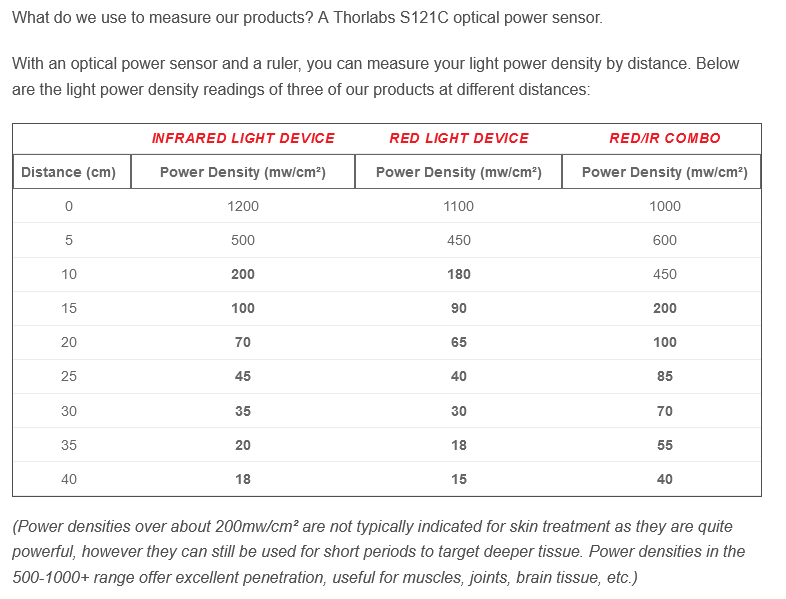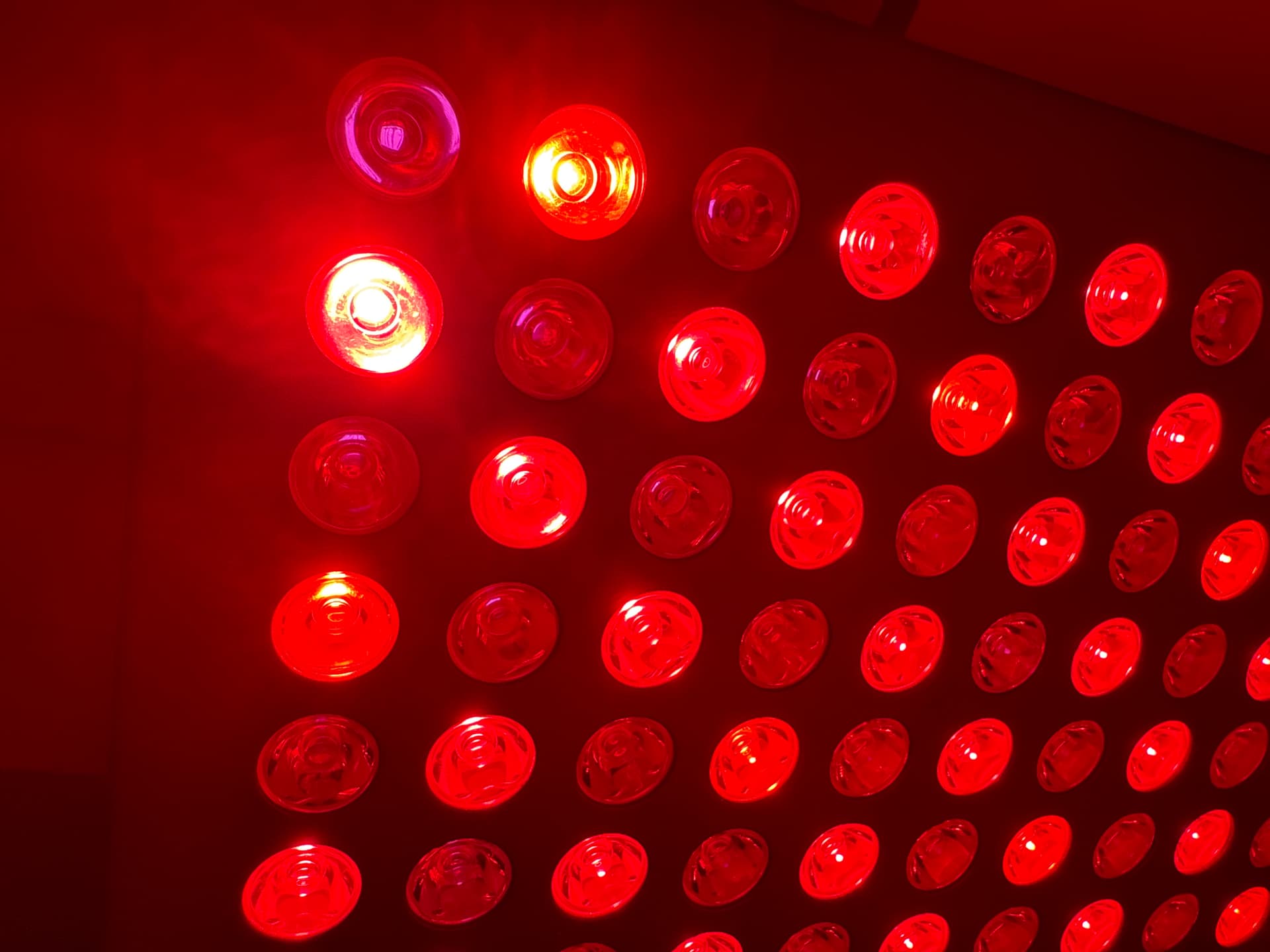Studies claiming benefits of red, near-infrared (NIR), and IR light use 20 to 200 mW/cm². A factor of 10, yet those selling rediculously overpriced devices recommend times below 15 min, not 150 or 1.5 min, and because of “biphasic dose response”, i.e. long exposure is detrimental due to cell heating (you don’t say), ROS, and/or NO release (thought that was the whole point?). They measure 6 to 8 inches from the source, proudly lecturing us on the inverse square law, which holds for point sources, like single LEDs, not for the flat panels they sell. And don’t you dare rely on the watts rating of a bulb since that may all just be heat! Never mind that IR is literally … “heat radiation”. BTW, white light has more red and more heat than redish heat radiation. I use heat radiation because it gives much red at relatively little heat. I want a sauna, not an oven.
My sauna has red heat lamps spreading at most 550 W over ~ 4m² about a meter away, that is 14 mW/cm², and I turn by 90 degrees every 15 min or so over an hour. Seems to be too little, too careful?
Feel free to use ChatGPT, our new scientific standard replacing critical thinking, to tell me how recklessly stupid I am because, for example, I do not know the power at exactly 620nm, 630nm, 633nm, 660nm, 670nm, 808nm, 810nm, 830nm, 850nm, 1064nm, … a small selection of advertised most crucial wave lengths for ideal results such as photodissociation of nitric oxide from the copper enzyme cytochrome c oxidase in mitochondria, or penetration in order to reach any mitochondria below the skin in the first place.
BTW, the bulbs are dirt cheap from China, without having been first imported by a reputable non evil entity to change the label and resell, so I will succumb to SARScancer any day now. Before that, anybody having some constructive criticism? (I won’t buy spectrometry devices. Tried methylene blue an hour before, not sure yet if it is placebo, but certainly does not feel bad.)

